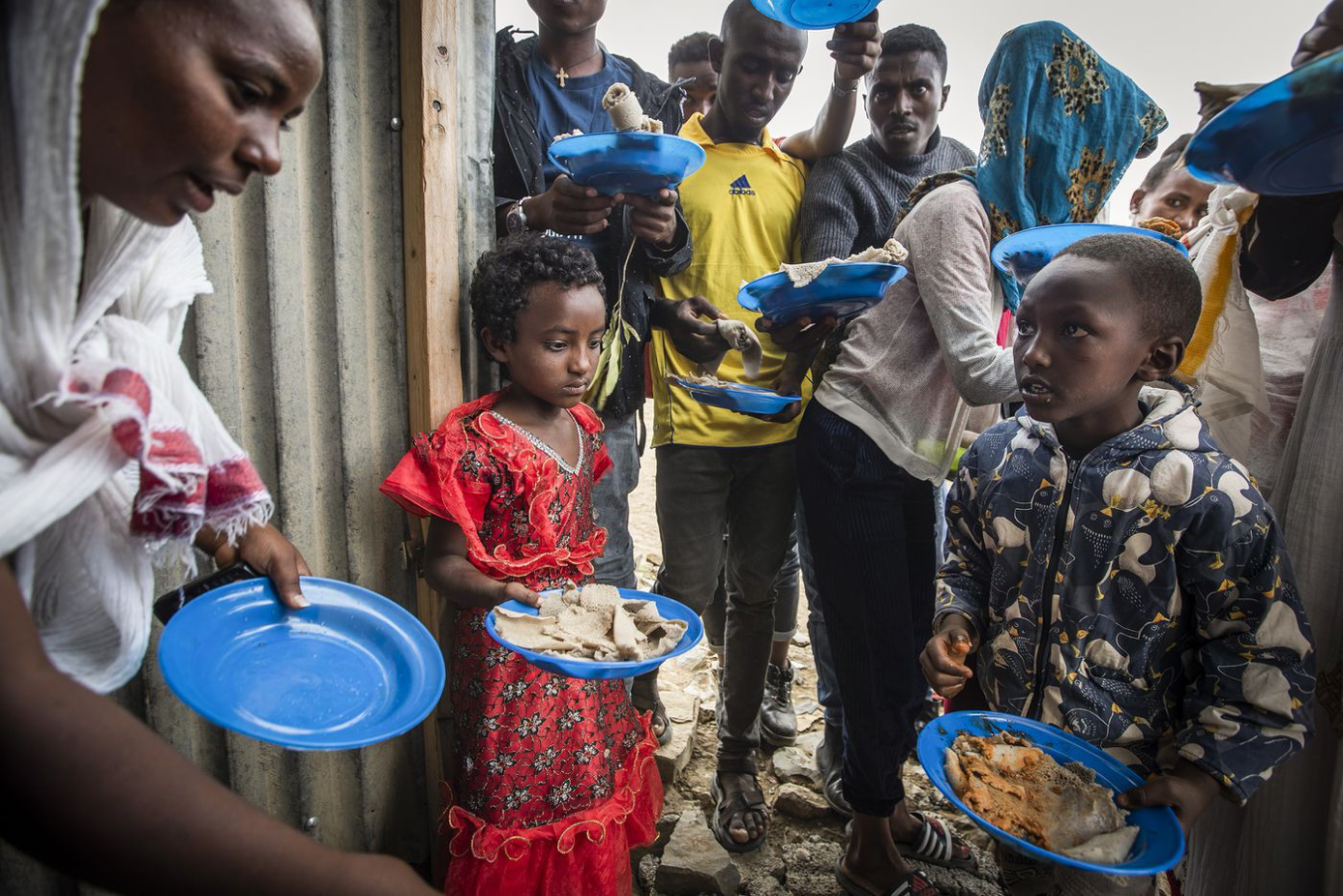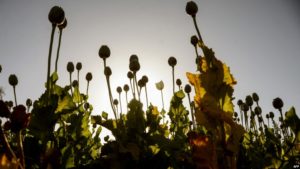Ethiopia’s Tigray region is facing a deepening hunger emergency, with about 350,000 people threatened by famine. It is the most severe starvation crisis in the world right now, and it is almost entirely manmade.
The region, located in the north of the country, has been engulfed in conflict since November, when a political dispute between Ethiopia’s central government and the Tigray People’s Liberation Front (TPLF), the political party that represents the Tigray region, erupted into open warfare. The Ethiopian National Defense Force has since partnered with troops from neighboring Eritrea and other militias within Ethiopia, specifically Amhara forces, in the battle against the Tigrayan defense forces.
The fighting has had horrific consequences. There have been credible reports of atrocities being committed by all parties in the conflict, including mass killings, mass rape, and destruction and looting of property. As of April, more than 1.7 million people had been internally displaced, and more than 60,000 refugees have fled to neighboring Sudan since November.
Aid access has been inconsistent, and in May the United Nations confirmed a CNN report that Ethiopian federal troops and allied forces were blocking humanitarian supplies from entering parts of Tigray — a charge the Ethiopian government has denied.
Taken together, experts and observers feared this would balloon into a crisis of mass starvation. Now that crisis has arrived.
What we mean when we say “famine”
What’s happening in Tigray is the world’s worst hunger crisis in a decade, since the devastating Somalia famine in 2011.
About 350,000 people in Tigray are facing a food “catastrophe,” which means they’re suffering from famine conditions. That classification is based on the Integrated Food Security Phase Classification (IPC), a global index that relies on assessments from United Nations agencies and other regional and international nongovernmental organizations.
“Catastrophe” is the highest classification, at Level 5. According to the IPC’s assessment, the risk of famine exists in several vulnerable pockets throughout Tigray, but millions of others across the region are at risk of falling into this category. Right now, more than 5.5 million people — about 60 percent of Tigray’s population — are facing acute food insecurity. As many as 2.1 million are in the “emergency” phase, a level below catastrophe, and 3 million people are in the “crisis” phase.
“We’re at the stage where it’s unavoidable that thousands, probably tens of thousands, of children will die of starvation in the next month,” said Alex de Waal, a research professor and executive director of the World Peace Foundation at Tufts University, who put out a report in April on the famine risks in Tigray.
“Food is definitely being used as a weapon of war”
The region was already in a precarious position, given the economic aftershocks of Covid-19 and the scourge of desert locusts, which disrupted agriculture in the past year. But when it comes to the current famine, “the biggest driver is conflict,” said Stanley Chitekwe, the chief of nutrition for Unicef in Ethiopia.
The fighting has displaced hundreds of thousands who have left behind their homes, their livelihoods, and any source of income they may have had. It has demolished roads, health care facilities, banks, water pumps, and much of the other infrastructure people and food systems rely on.
When the fighting broke out in November, it also disrupted the harvest season. According to the United Nations Food and Agriculture Office (FAO), about 80 percent of people in Tigray rely on agriculture for their livelihoods.
Even more concerning, though, are reports that farmers and food stocks have been deliberately targeted, mostly by the Eritrean forces allied with Ethiopia’s government. Witnesses have said troops have incinerated crops, looted farms and food stores, and killed livestock, like oxen — destroying not just potential food sources but also the tools people need to grow and collect food.
There are also reports that Eritrean soldiers are forbidding farmers from plowing their fields, and humanitarian aid workers have reported being threatened by armed forces, especially Eritrean forces, and having their supplies and vehicles confiscated.
UN Emergency Relief Coordinator Mark Lowcock, in an interview with Reuters, specifically called out Eritrean forces for “trying to deal with the Tigrayan population by starving them,” namely by blocking supplies and looting. “Food is definitely being used as a weapon of war,” he said.
Aid is still getting through to millions of people; according to the UN Office for the Coordination of Humanitarian Affairs (OCHA), aid agencies have reached more than 2.3 million people with food aid since May. But most of it is going to areas where the Ethiopian government is in control; those outside of it, especially in rural areas, do not have access.
Chitekwe of Unicef said the situation is very dynamic; as of Wednesday, they have access to about a third of the region’s 93 waredas, or districts, partial access to a bit more than another third, and the rest are inaccessible. Which areas groups can reach can change quickly depending on the conflict and who’s in control.
Anaol Dalle, a PhD candidate at the University of South Florida who is studying the Horn of Africa and who spoke to me from Addis Ababa, said this unequal access is deliberate. The Tigrayan defense forces have a lot of support among the population, and the Ethiopian government wants to erode that support. The Tigrayan forces are also blending in with the population, and Ethiopia and its allies believe that cutting off food and supplies is a way to weaken those forces, too.
The Ethiopian and Eritrean governments both deny that their forces are preventing aid from reaching parts of Tigray. The Ethiopian government has also said most farmers in Tigray were planting crops on schedule.
In fact, the Ethiopian government has denied there is any hunger crisis at all. “There is no hunger in Tigray,” Prime Minister Abiy Ahmed said this week. “There is a problem and the government is capable of fixing that.”
Given the historical echoes to previous famines the country has experienced, including one in the 1980s that killed an estimated 1 million people and captivated the world’s attention, it’s not surprising Abiy would downplay the specter of famine. Drought increased the hunger crisis in the 1980s, but then, as now, politics and war turned it into a catastrophe.
Abiy’s expected election win means the war — and the hunger — will likely continue
All of this is happening as Ethiopia holds elections. Though billed as the country’s first free and fair vote, that isn’t quite the reality. There is no voting in Tigray, and opposition parties in other regions are boycotting, arguing their leaders are facing threats and intimidation from Abiy and his ruling Prosperity Party. All of this makes it likely that Abiy and his party will win handily, despite the resistance at home and international criticism.
Abiy’s expected victory will allow him to claim an electoral mandate, despite the questions about the integrity of the elections. His win may also more deeply entrench Ethiopia’s civil war.
As experts told me, much of Abiy’s support comes from those who oppose the Tigrayan leadership, so they’re not exactly displeased with his decisions. Which means Abiy has less incentive to attempt to resolve the conflict in Tigray or respond to international pressure to do so.
All of this makes for a very uncertain future for Tigray and the humanitarian emergency unfolding there. The IPC has predicted that, if the situation continues as is, by September, more than 400,000 people will be at risk of famine in the region.
“We are witnessing a humanitarian nightmare,” US Ambassador to the United Nations Linda Thomas-Greenfield said earlier this month. “This is not the kind of disaster that can be reversed.”
Will you support Vox’s explanatory journalism?
Millions turn to Vox to understand what’s happening in the news. Our mission has never been more vital than it is in this moment: to empower through understanding. Financial contributions from our readers are a critical part of supporting our resource-intensive work and help us keep our journalism free for all.




